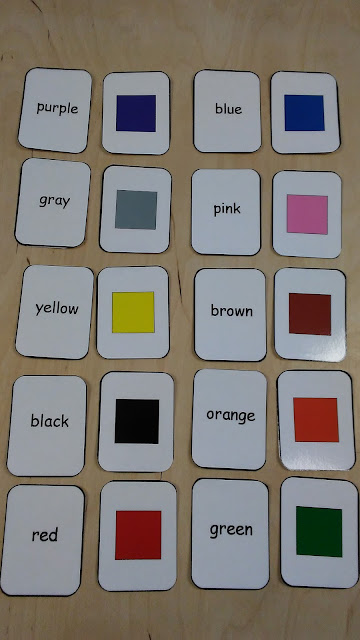Lending Library Highlight
Preschool Literacy Bag - The
Mixed-Up Chameleon
Eric Carle is a
popular author and illustrator of children’s books and he most often tells his
stories of acceptance, kindness, and responsibility through the experiences of
nature and animal characters. Within their stories, he also embeds a large
variety of learning concepts, which links to his widespread appeal in the early
childhood educator community. In the
book, The Mixed-Up Chameleon, he tells the story of a chameleon who wishes it
could be like all the other animals it sees, but in the end comes to embrace
his own unique self.
Because this story has many possible discussion threads and
learning concepts built into it, a preschool teacher could easily read it every
day at circle time for a week with a different learning focus each time. One
day the discussion could be about things the animals share in common and things
that make them unique, and then following day the conversation could expand
into how the special characteristics of animals help them survive in the
world. Another day the discussion could
be about what things the students have in common with their classmates, and
what things are unique to only them, while other days could delve into color
matching, color mixing, colors in a rainbow, and story retelling.
Retelling stories, also called narrative skills,
are one of the essential literacy skills preschool children need support in
learning. Before formal reading instruction can begin, children must have a
solid understanding that stories have a beginning, a middle and an end, and understanding
the sequence of events in a story helps children later with their reading
comprehension skills. Children also need to be able to describe events that
happen within a story so they can understand story structure and grammar. On
page 31 of the Kansas Early Learning Standards it
shows that children should be able to start retelling some details of a book
using pictures or props as support by the end of their third year.
We help children grow these skills when we:
- Talk with children about our activities as we are doing them in the classroom to develop their receptive language skills.
- Tell stories about events that have happened.
- Help children tell their stories and describe events that have happened.
- Ask open-ended questions to encourage children to talk more and practice their expressive language skills.
- Point to a picture and say “Tell me what’s happening here?” or “What do you think will happen next?”
- Read favorite books again and again.
- Sort items by size, shape and color.
- Ask children to draw a picture. Then let them tell you what is happening in the picture. Write their words on the picture.
- Talk about activities that happened that day in the order that they occurred.
- Ask children to reenact stories about a book you read.
- Provide props to encourage storytelling and retelling.
For story retelling props that go with The
Mixed-Up Chameleon, you can print off pieces from Kizclub like the one in our bag below.
In our literacy bag there are chameleon color matching
games, like this one.
And this one . . .
And for your students that are starting to sight read color
words, this is another activity you can offer. . .
Click here and here to download a couple lesson plans for the
Mixed-Up Chameleon book, or if you are interested in checking out the literacy
bag, visit our lending library!
Home Grown Friends has some great extension ideas.
What are some of your favorite Mixed-Up Chameleon activities?
What are some of your favorite Mixed-Up Chameleon activities?








Comments
Post a Comment